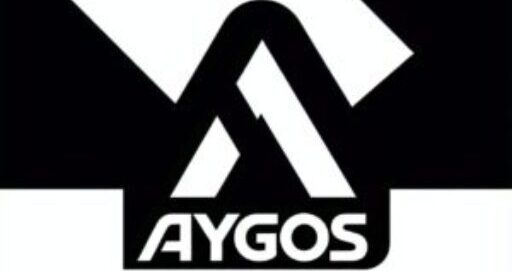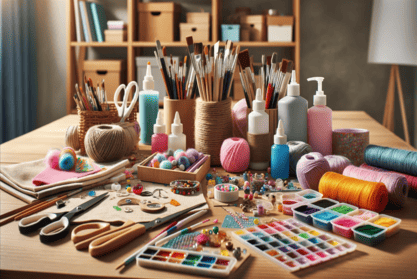Crafting is an exciting and rewarding activity, but having the right materials is crucial to ensuring a smooth and enjoyable process. Whether you’re a beginner or an experienced crafter, understanding the basics of crafting supplies can make your projects easier and more successful. This guide will explore essential materials, their uses, and how to choose the best options for your crafting needs.
Crafting materials can be broadly categorized into tools, consumables, and embellishments. Tools are items like scissors, rulers, and glue guns that you’ll use repeatedly. Consumables include paper, fabric, and thread that are used up in the process of creating. Embellishments, such as beads and stickers, add a decorative touch to your finished work.
Paper is a fundamental material in many types of crafts. Options include construction paper, cardstock, origami paper, and specialty paper like vellum. Cardstock is thicker and ideal for projects that require durability, such as greeting cards and scrapbooking. Origami paper is thin and comes in various colors and patterns, making it perfect for folding intricate shapes. For artistic designs, consider using textured or patterned paper.
Fabric is another versatile material, used in projects like sewing, quilting, and fabric art. Cotton is an excellent choice for beginners due to its ease of handling and wide availability. Felt is a non-woven fabric that doesn’t fray, making it ideal for simple crafts and decorations. For more advanced projects, explore materials like linen, silk, or denim. Having a variety of fabrics on hand allows you to experiment with texture and style.
Adhesives play a significant role in crafting. Glue options include liquid glue, glue sticks, and hot glue guns. Liquid glue works well for paper and lightweight materials, while hot glue is suitable for heavier items like wood or fabric. Double-sided tape and adhesive dots are useful for precise applications, especially in scrapbooking and card-making. Choose an adhesive based on the material you’re working with to ensure a strong bond.
Cutting Tools are essential for shaping and trimming materials. Scissors are a must-have, with specific types like fabric scissors and paper scissors offering specialized functions. Craft knives are excellent for detailed cutting, and rotary cutters are perfect for straight lines, especially in fabric work. A cutting mat is highly recommended to protect your workspace and ensure clean cuts.
Paint and Brushes are essential for adding color and detail to your projects. Acrylic paint is versatile and adheres to surfaces like paper, wood, and canvas. Watercolor paint is ideal for creating soft and blended effects. Having a variety of brushes in different sizes and shapes allows you to experiment with techniques and textures. Foam brushes are also great for covering large areas evenly.
Thread and Yarn are indispensable for sewing, knitting, and crocheting. Cotton thread is versatile and works well for most sewing projects, while embroidery floss is perfect for decorative stitching. Yarn comes in different weights and textures, with acrylic yarn being a budget-friendly and beginner-friendly option. Wool and cotton yarn offer higher quality and durability for more advanced projects.
Beads and Embellishments add charm and personality to crafts. Beads come in various shapes, sizes, and materials, from glass and plastic to wood and metal. Sequins, buttons, and rhinestones are additional embellishments that can elevate the look of your projects. When selecting embellishments, consider their size and weight relative to the base material to avoid overpowering the design.
Other Tools and Accessories that are invaluable in crafting include rulers, stencils, and punches. Rulers ensure precise measurements, especially in projects requiring symmetry or straight edges. Stencils are excellent for creating uniform shapes and designs. Punches are a quick and easy way to add decorative shapes to paper and other materials.
When purchasing crafting supplies, consider factors like quality, versatility, and cost. High-quality tools may have a higher upfront cost but often last longer and perform better. Versatile materials like plain cardstock or neutral-colored fabrics can be adapted for various projects. Budget-friendly options, such as using recycled materials or purchasing supplies in bulk, can help you save money without compromising creativity.
Proper organization of your crafting materials is key to maintaining an efficient and enjoyable workspace. Use storage containers, drawers, or shelves to keep items sorted and accessible. Clear bins or labeled containers make it easy to find what you need quickly. A well-organized workspace not only saves time but also sparks inspiration by allowing you to see all your options at a glance.
Understanding the basics of craft materials empowers you to choose the right tools and supplies for any project. With the right resources, crafting becomes a fun and stress-free activity. Whether you’re making simple DIY projects or tackling complex designs, having these essentials on hand ensures you’re always ready to create.

